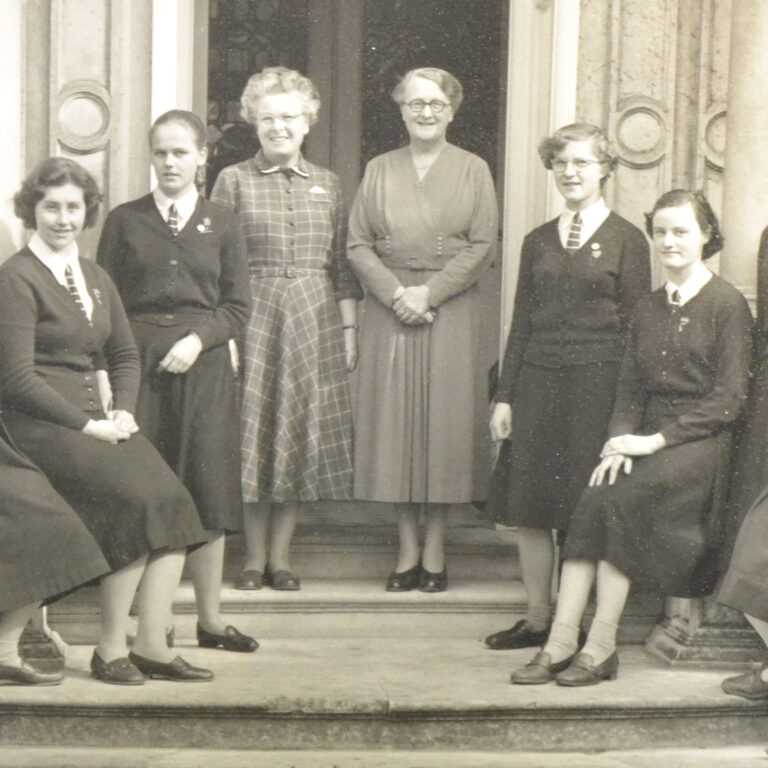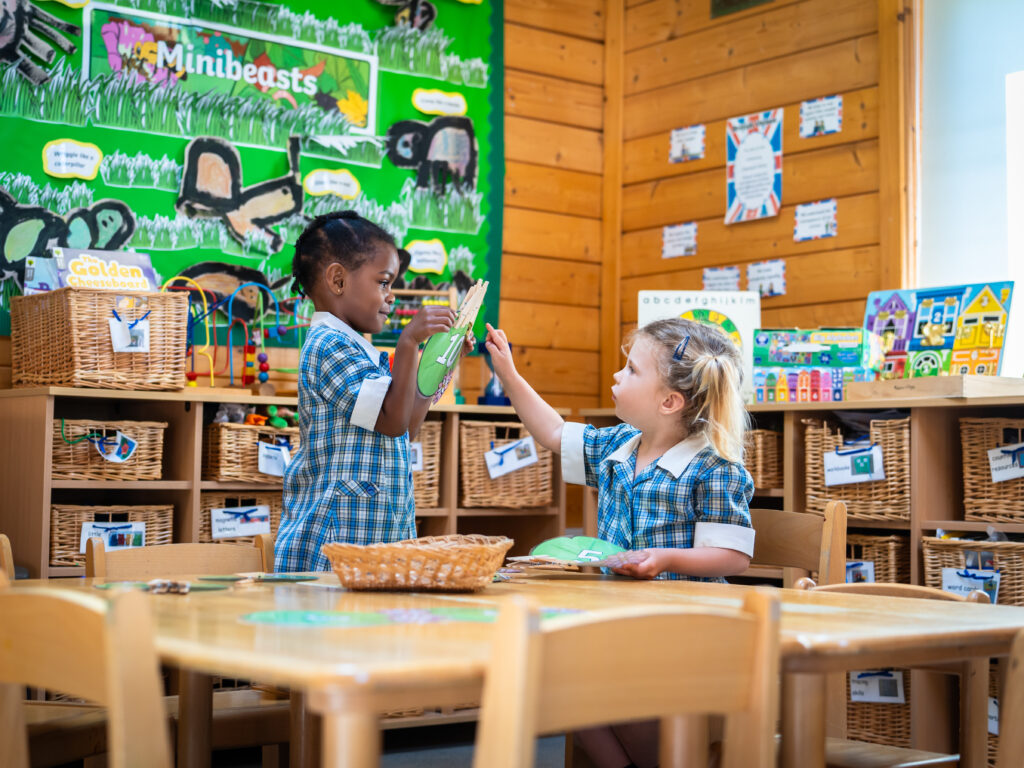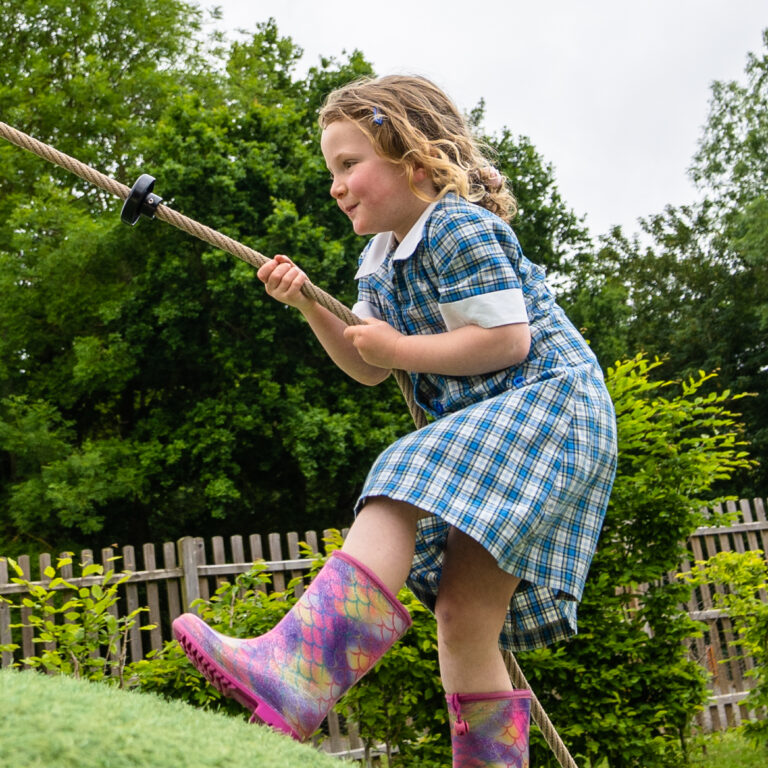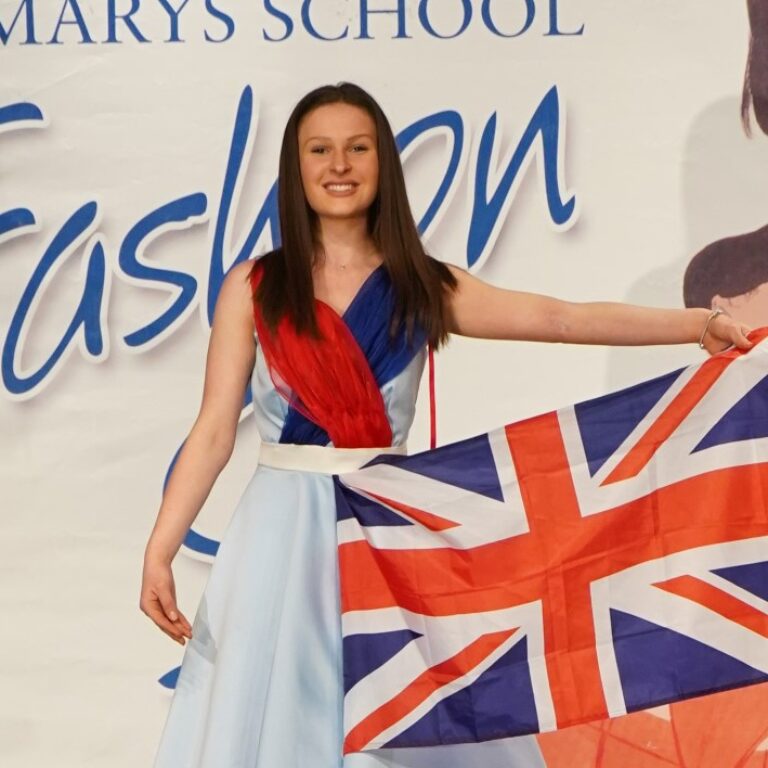St Mary’s School was opened in the summer of 1908 by sisters Miss May and Miss Lillian Billson at 15 Lexden Road, a house in St Mary’s Terrace East. Since then the school has grown to 50 times its original size and become one of the foremost independent schools in the region.
St Mary’s opened with just eight girls, five of whom had moved from Miss Walton’s School in Inglis Road. Miss May taught six nine-year-old girls in the one classroom, using green collapsible desks, while Miss Lillian taught the other two girls in the dining room. The girls learnt English, History, Geography, French, Arithmetic, Geometry and Latin and in 1914 they sat their first public examination, the Junior Cambridge Exam.
St Mary’s grew rapidly and by 1915 it had expanded at 17 Lexden Road. Basements were used as cloakrooms and the other floors were used as classrooms. The top two floors of 13 Lexden Road were acquired for boarders, while the remainder of the house was used as a surgery by Dr Fell. During the First World War, St Mary’s girls were encouraged to be patriotic, so much so that German lessons were discontinued and the girls instead helped provide boxes of fruit, eggs, cigarettes and other goodies for the wounded in the local military hospitals.
In 1923, the school bought new premises on Lexden Road, ‘Glen Mervyn’ – today’s Senior School. Soon after buying the new building a gymnasium was built and the girls enjoyed learning to climb ropes and vault the horse! Miss May and Miss Lillian retired at Christmas 1934 and Miss Phyllis Comrie became the new Headmistress. During this time the number of girls attending the school continued to grow and the school flourished.
However, there was a decline in the number of pupils during the Second World War and when just seven girls were attending, the governors of the school began to insist that the school must close. Miss Comrie refused to allow this to happen and worked unpaid for a year in order to keep the school open.
Post-War
Once the war was over, the number of girls attending the school grew again rapidly and extra space was needed. A nursery was established in a converted stable, the garage became an art room and the governors bought ‘Gostwycke’ in Cambridge Road, for the boarders.
In 1957, Miss Comrie retired after 23 years as Principal. She had maintained the high standards set by the previous headmistresses, the Billson sisters. The news of her retirement caused great sadness within the school community and many people believe the school owes a deep debt of gratitude to her. Indeed, without her leadership and tenacity of purpose during World War II, the school would not be here today.
1950s and 1960s
Miss Evelyn Butterworth, already a teacher at St Mary’s, became Headmistress in 1957. The school curriculum was modified to focus on junior girls studying for the Common Entrance Examination. This gave the girls the opportunity to go on to boarding schools or to take the 11+ examination before entering local grammar schools.
But life at St Mary’s was not just about exams – as now, the girls still had plenty of fun. Miss Butterworth led the school’s Golden and Diamond Jubilees in 1958 and 1968. A pageant was presented by all 220 pupils based on the history of Colchester as seen through the eyes of the children.
By 1965, girls were enjoying swimming lessons at the garrison pool and the structure of the school was changing. St Mary’s ceased to take boarders in order to concentrate on the day students, and five years later the school became an educational trust with a dedicated and active Board of Governors.
1970s and 1980s
Sadly, in 1973 Miss Butterworth died and Miss Margaret Wake took over the role of Headmistress. She ensured that the development plans for the school continued. New kitchens, classrooms, a large dining room and a heated swimming pool were all added to the school at this time.
Due to overwhelming demand from parents who wished their daughters to be taught at an independent school, a senior school was opened in 1973, thus enabling the girls to study to GCE O-Level standard. In 1977 the school’s first O-Level results were encouraging, with the majority of girls achieving A and B grades.
Also in 1973, to allow for expansion of the school, St Mary’s purchased The Turrets, a Grade II-listed Gothic curiosity originally built in 1817 for the infamous Colchester Town Clerk Francis Smythies (1779-1840). The plastered brick, two-storey building with a cellar, attics, Gothic painted windows and beautiful ornate plasterwork ceilings and castle-style doors provided excellent classroom accommodation. Please download the booklet and watch the video below to find out more about the history of The Turrets:





